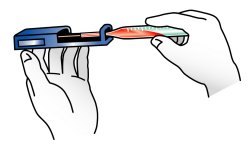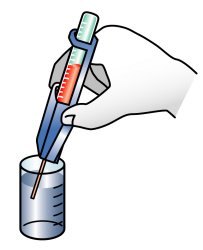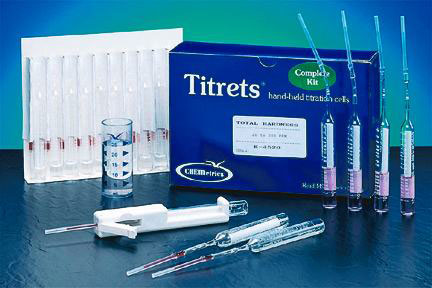 101WINEMAKING.COM 101WINEMAKING.COM
42.4883667, -77.113860700000038
|
Tirtets: 10 test vial and valves. The handle is not included. It is a separate, one time purchase. The “valves” are on the under side of inside packaging, Titrets for determination of Sulfite in wine
Sulfites have been used for centuries to sanitize and preserve foods. They are used worldwide in the wine industry as antioxidant and anti-microbial agents. However, sulfites recently have been identified as causative agents in certain allergic reactions suffered by asthmatics. As a result, the FDA and the Bureau of Alcohol, Tobacco and Firearms have mandated that sulfites in foods and beverages, at levels of 10 ppm or higher, be identified on the label. Although regulations are based on the amount of total sulfite (the sum of the free and bound forms), wine makers, bottlers and others associated with the industry are primarily interested in the amount of free sulfite in the wine or must. The combination of sulfite with aldehydes or pigments, which are naturally present, may reduce the effectiveness of the additive. The Titrimetric Method CHEMetrics’ sulfite test kits are based on the "Ripper" method, which has long been used by
the wine industry as a standard for rapid sulfite analysis. Sulfite is titrated with an iodide-iodate solution,
using a starch end point indicator. Phosphoric acid is used to adjust the pH of the sample. Results are quantified
using direct reading titration cells. The test determines free sulfite as ppm (mg/L) SO2. Titrets®simplify titration tests just
as CHEMets®and
Vacu-vials®simplify colorimetric tests. Sample is drawn into the ampoule in small increments (with mixing) while the analyst watches for the color change, which signals the end-point of the titration. When that change occurs, the ampoule is placed in an upright position and the test result is read opposite the location of the liquid level, using a scale printed on the side of the tube. The entire process requires only a minute or two and avoids all the equipment hassle and clean up associated with ordinary titration.
| ||||
|
Departments |
|
| May Your Wines Fall Bright! | |
Copyright 2000 Fall Bright All rights reserved.
Revised:June 26, 2017




